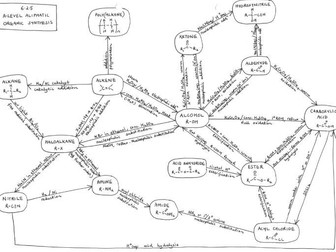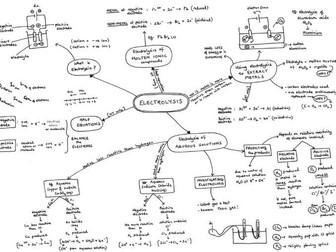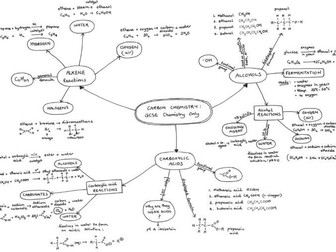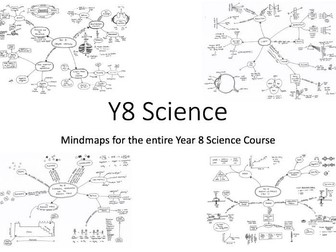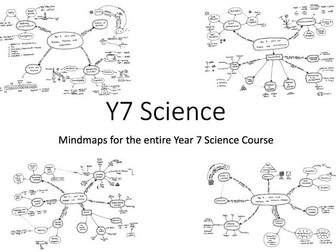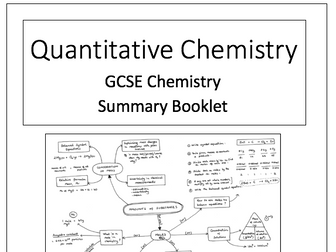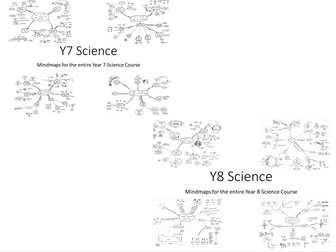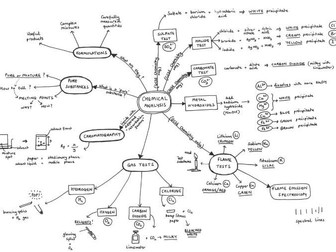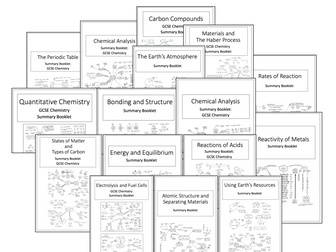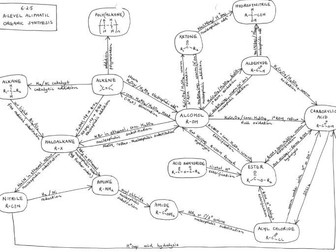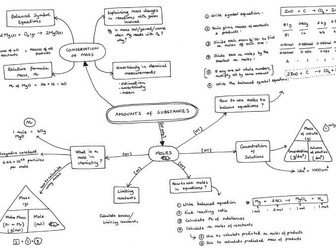
Mind Maps for ALL of the Chemistry Content of AQA GCSE Chemistry & Combined Science (2018 exams)
Mind maps to support learning for the entire AQA GCSE Chemistry and GCSE Combined Science for 2018 exams.
These summaries cover every single section from the specifications and cover both the Combined Science and Chemistry specifications and also show clearly which is Higher content.
They are PDF files that can be incorporated into powerpoints, given out as a handout at the beginning of a topic to give the ‘big picture’ of the unit, and then referred to throughout the unit and/or used to encourage students to look ahead at what is coming next.
Powerpoints of the PDF files have been included as a bonus to make it easier to include them into presentations.
They can also be used as a revision tool – questions on the mind maps help pupils to see the point of each section and can also challenge them to add missing information or make their own better mind maps, using the specification as a reference point.

